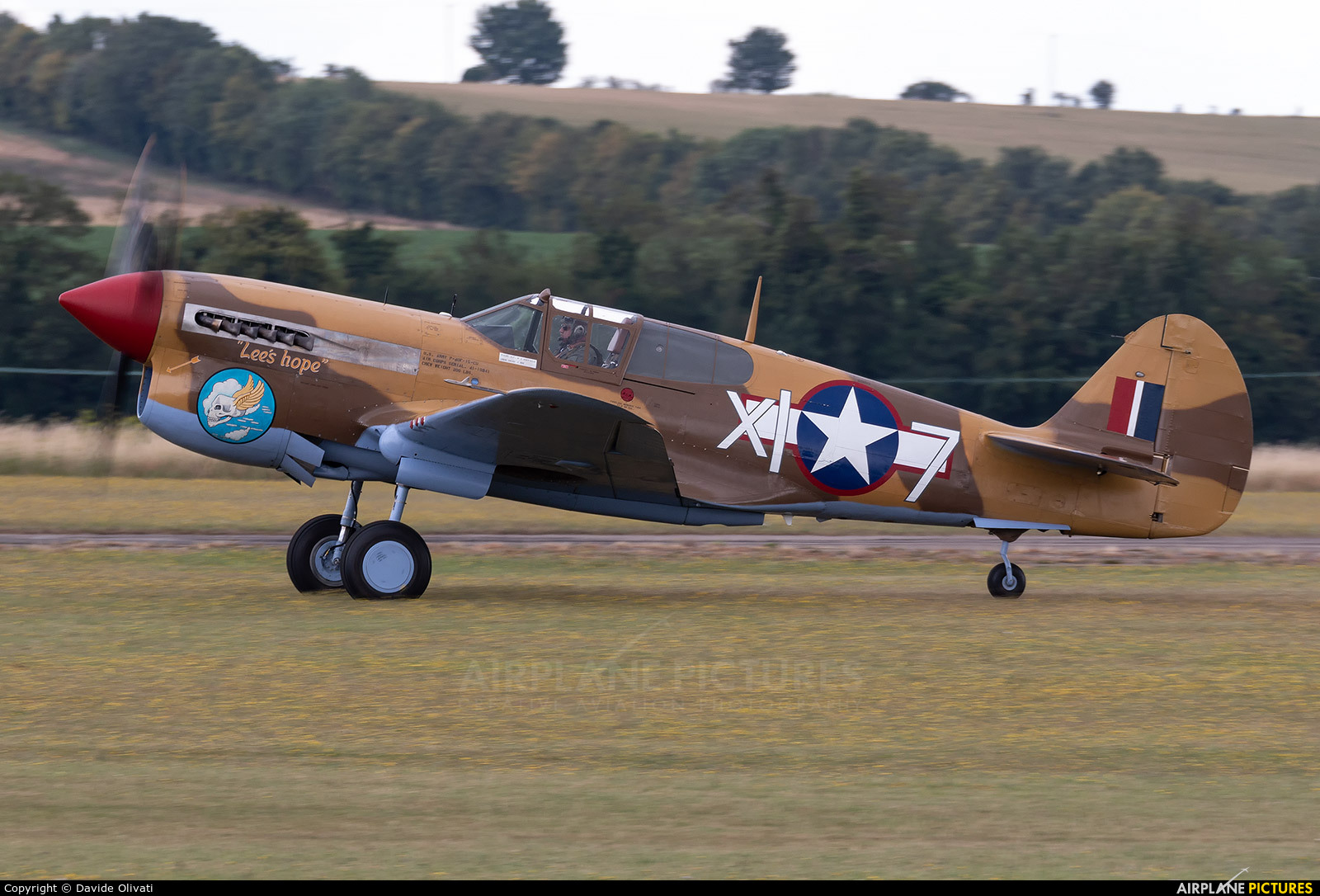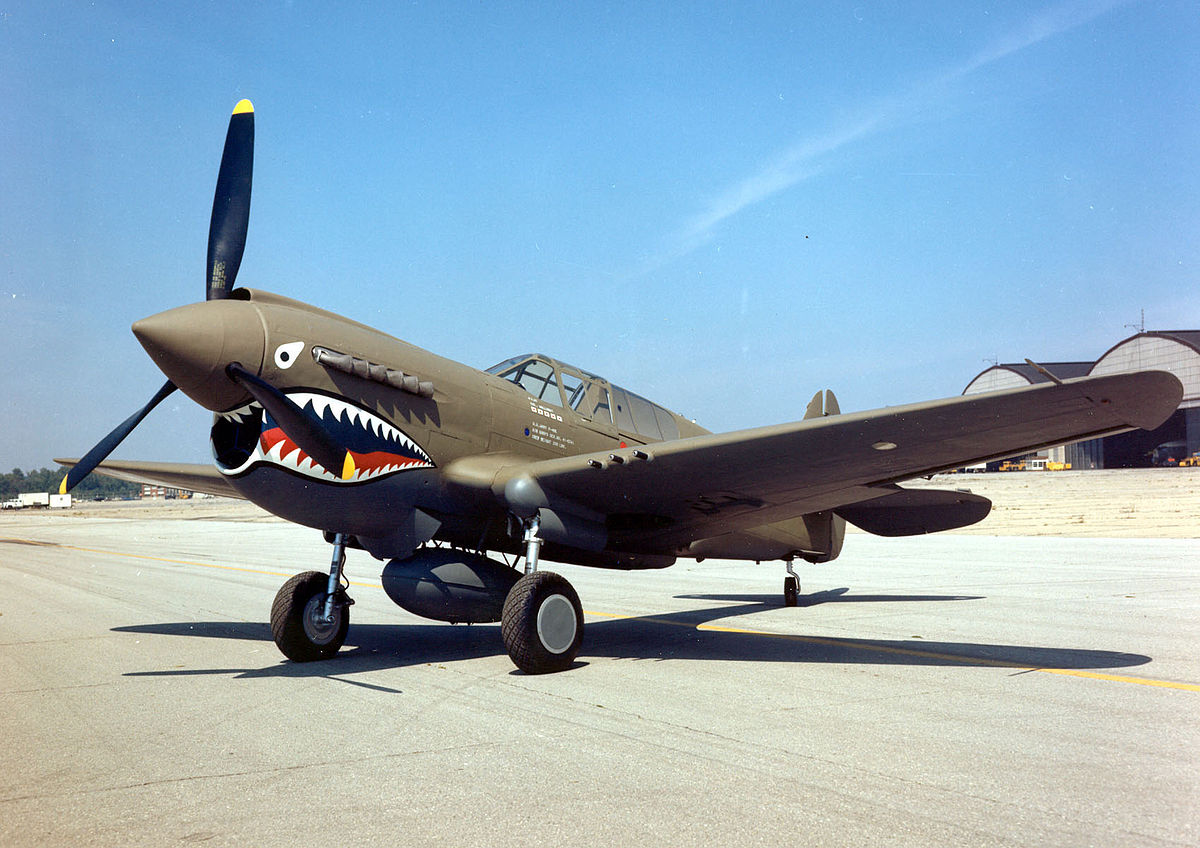P 41 Warhawk - Curtiss P-40 Warhawk, the only American fighter that first flew in 1938; a chair A missile and ground attack aircraft. The P-40 design was a modification of the earlier Curtiss P-36 Hawk. I was able to test it quickly in the development and production time with the managed service. The Warhawk was used by most of the Military powers during World War II and saw regular service until World War d. It was the third most successful American fighter in World War II, after the P-51 and P-47. Production of the P-40 ceased in November 1944, 13,738 were built.
The P-40 Warhawk was the name given to the aircraft by the United States Army Air Corps. After June 1941, the name was used by the USAAF for all models and became the official designation for all P-40s. The P-40 was first flown by the British Commonwealth and Soviet Air Forces; The Tomahawk designation was used for the P-40B and P-40C models, and the Kittyhawk designation was used for the P-40D and later models.
P 41 Warhawk
The P-40s first saw combat in June 1941 against British Commonwealth units of the Desert Air Force in the Middle East and North Africa.
Computer Wallpaper For Curtiss P 40 Warhawk
No. 112 Squadron Royal Air Force took part in the first operation of Tomahawks in North Africa, and the group was the first Allied air group to display the "Shark's Mouth" insignia.
The P-40's lack of a high-speed supercharger made it inferior to Luftwaffe fighters such as the Messerschmitt Bf 109 or Focke-Wulf Fw 190 in high-altitude combat, and was rarely used in operations at northeastern Europe. However, between 1941 and 1944, the P-40 flew over North Africa; It played a major role alongside the Allied air forces in three major theaters: the Southwest Pacific and China. Middle East Southeast Asia Eastern Europe There are also significant operations in Alaska and Italy. The P-40's superior performance made it superior in air-to-air combat; It was not important in these theaters that bombers served as defenders and bombers. Although it is suitable for close air support and has a reputation as a medium design in the post-war period, more direct research, including examination of the records of the Allied forces, shows that this is not the case: the P-40's performance as an air force fighter is astounding. Even though it was a big loss at times, my plane had a lot to lose.
UK based on claims of victory during the war. Australia New Zealand, Canada South Africa More than 200 Allied, American and Soviet fighter pilots flew the P-40. They have about 20 aces;
North Africa China Myanmar and India Mainly south-west Pacific and Eastern Europe. The P-40 offered the additional advantages of low cost and durability, allowing it to be retained as a ground attack aircraft after it was no longer used as a fighter.
Curtiss P 40f Warhawk By Daniel Wales Images On Deviantart
On October 14, 1938, Curtiss test pilot Edward Elliott flew the XP-40 prototype in Buffalo on its first flight.
Its Pratt & Whitney R-1830 Twin Wasp 14-cylinder air-cooled radial engine was replaced by a supercharged Allison V-1710 V-12 engine under the direction of Don R. Berlin. The original design placed the glycol cooling radiator in a central position on the fighter aft of the trailing edge of the wing.
USAAC Fighter Projects Officer Lieutenant Bjamin S. Kelsey flew this prototype for 300 miles in 57 minutes. It flew at 315 miles per hour (507 km/h). Concealing his disappointment, he told reporters that future versions could go 100 miles per hour (160 km/h).

Kelsey liked Allison Gine because of her strong, dynamic, smooth, and predictable power curve. The V-12 engine has the same power as a radial engine, but has a smaller front end, rolls better than an airplane and radial engine, and claims a 5% increase in speed. fast.
Curtiss P 40e \
Curtiss engineers worked to improve the speed of the XP-40 by moving the radiator forward. Because of the low yield, Kelsey ordered the aircraft evaluated in the NACA wind tunnel to identify solutions for better aerodynamic qualities. From 28 March to 11 April 1939; The model studied by NACA.
Based on the information received, Curtiss moved the glycol cooling radiator forward to the chin; Its new air cooler also includes an oil cooler air intake. Other improvements combined the landing gear doors and exhaust pipes to make them work for the USAAC.
Without a useful tail, Kelsey flew the XP-40 from Wright Field to the Curtiss factory in Buffalo at an average speed of 354 mph (570 km/h).
An unusual construction situation is New York; A special truck for express delivery at the main Curtiss plant in Buffalo. The rig used newly designed P-40s as two main components: the main wing and the fuselage; Eight miles from the factory, the two units were moved to the airport, where they were combined for delivery.
Vintage Reproduction Poster P 40 Warhawk Airplane
P-40B in flight; Three-quarter view of X-804 (s/n 39-184). This aircraft served with an advanced training unit at Luke Field, Arizona.
The P-40 was intended as a target aircraft, capable at high altitudes and altitudes, but suffered from a lack of power at high altitudes. Loud and fast, this is one of the most difficult turns of the war.
This could change most of the opposition facing North Africa and the Russian presence. In the Pacific Theater, the A6M Zero light fighter and the Nakajima Ki-43 "Oscar" were at different speeds. Claire Chnault, the commander of the American Volunteer Corps, advised that the dogfight with the Japanese fighters should not be prolonged due to the limited speed of the Japanese.

Allison's V-1710 engines produce 1,040 horsepower (780 kW) at sea level and 14,000 ft (4,300 m). Not as strong as the current champions; The top speeds of earlier P-40 models were only average. A single-stage, single-speed supercharger meant the P-40 was a high-altitude fighter. Later versions, 1,200 hp (890 kW) Allisons or more powerful 1,400 hp Packard Merlin engines, were more powerful. On a small scale, climbing is difficult.
Phoenix Model P 40 Warhawk 30 35cc Electric/gas Arf
Fighter P-40 ace; Clive Caldwell (RAAF) said that the P-40, which claimed 22 of its 28½ hits in that episode, "was a bit difficult to maneuver on the dock, but it was fast."
The P-40 was one of the fastest dive fighters of the early warplanes and had good speed control.
Evidence of P-40 durability: In 1944, F/O T. R. Jacklin (pictured) flew this No. 75 Squadron RAAF P-40N-5 over 200 mi (322 km) and 25% of its distance after losing an aileron terminal. Wing damage caused by a mid-air collision with another P-40N-5.
The P-40 can withstand harsh conditions and various weather conditions. Its semi-modular design makes it easy to maintain in the field. It doesn't have anything new like enlarged ailerons or automatic guide vanes, but its sturdy construction allows the P-40s to pull off high-G turns and survive some winds. Sometimes air raids were recorded by the Desert Air Force and the Soviet Air Force.
Curtiss P 40
Mitsubishi A6M No Performance range is good by early fighter standards of the Supermarine Spitfire and Messerschmitt Bf 109, although better than the Nakajima Ki-43 and Lockheed P-38 Lightning.
Caldwell discovered the P-40C Tomahawk's twin .50 inch (12.7 mm) Browning AN/M2 "light-barrel" dorsal nose-mount machine gun mounts and two .303 Browning machine guns on each wing.
Caldwell still liked the early Tomahawk, but preferred the P-40D (Kittyhawk I), which, among other things, had two .50 inch (12.7 mm) guns. D hits the hull and cockpit and does a lot of damage. This allowed Army pilots in Asia and the Pacific to engage Japanese fighters instead of trying to outmaneuver their enemy. Later P-40 models are well worn. Visibility is adequate, though obstructed by a complex windshield frame, and on earlier models by a fully enclosed rear roll cage. Low visibility on the ground and a narrow approach to the landing caused a lot of loss on the ground.

Curtiss tried a follow-up design, the Curtiss XP-46, but it was less efficient than the later P-40 models and was rejected.
Curtiss P 40 Warhawk Micro Rtf Airplane W/pass
April 1939 saw the European Air Force's newest flagship, the fast, linear jet, and the US Army Air Corps placed its largest ever order for 524 P-40s.
An early order from the French Armée de l'Air, which operated the P-36s. The Armée de l'Air ordered 100 units (the order was later increased to 230) as the Hawk 81A-1. However, Frch failed before leaving the factory and the aircraft was converted into British and Commonwealth service (the Tomahawk I), sometimes complete with metric flight equipment.
At the end of 1942, When the Frch forces left North Africa to the Allies from the Vichy regime, the US forces transferred the P-40Fs from the 33rd FG to the GC II /5.
German stealth, stealth b52 bomber, stealth bomber ebike frame, stealth bomber ebike, stealth bomber electric bike, german bomber, unmanned stealth bomber, ww2 german stealth bomber, stealth bomber, stealth bomber bike specs, b-2 stealth bomber, stealth bomber jet
0 Comments